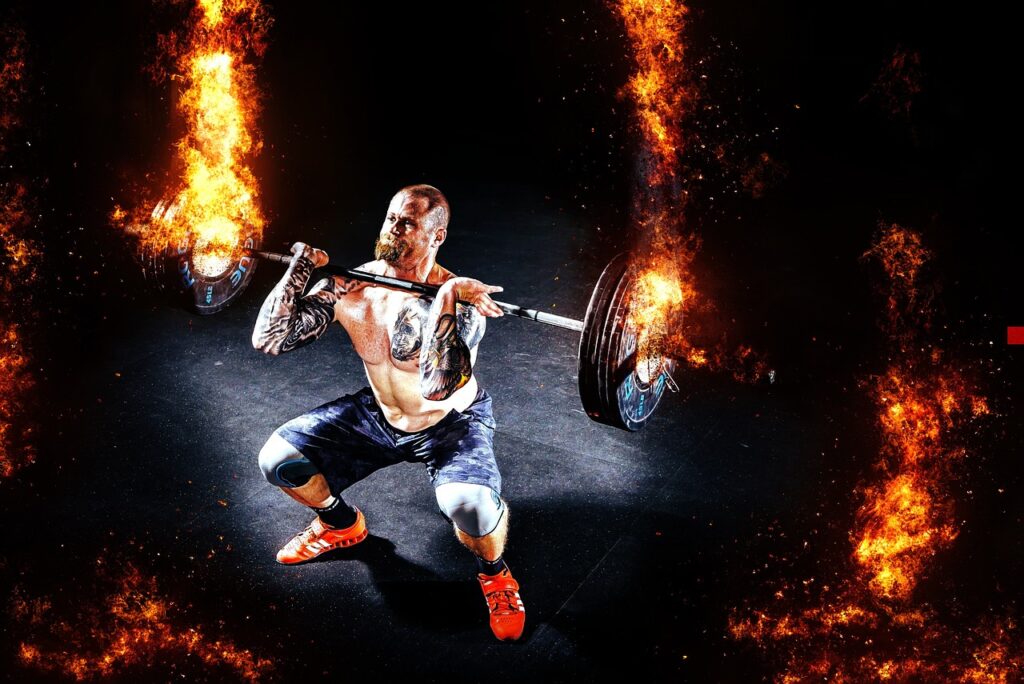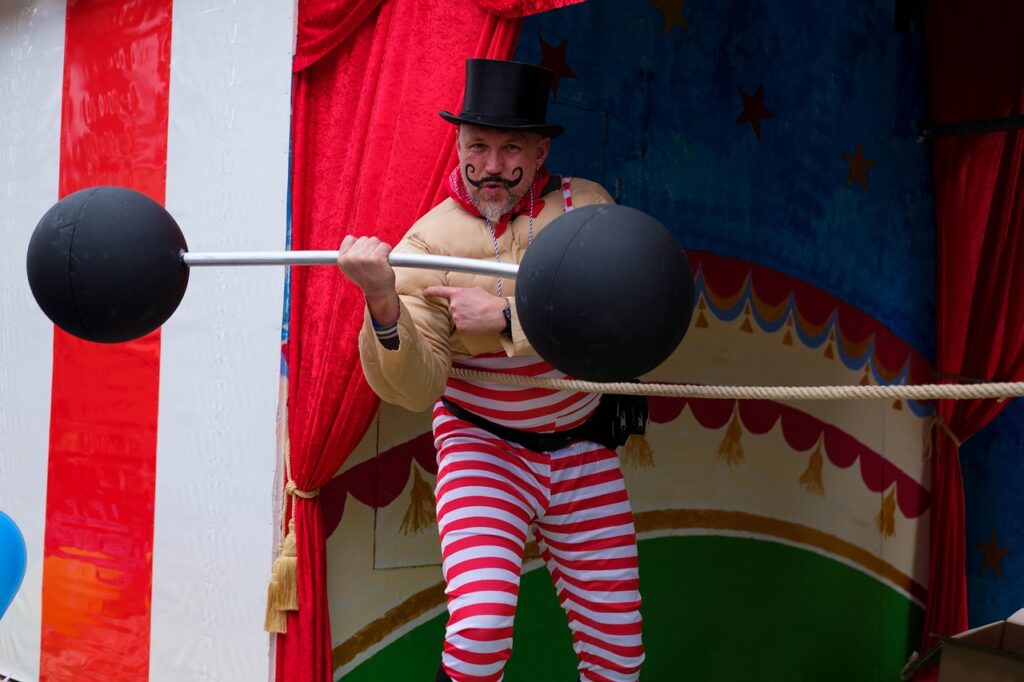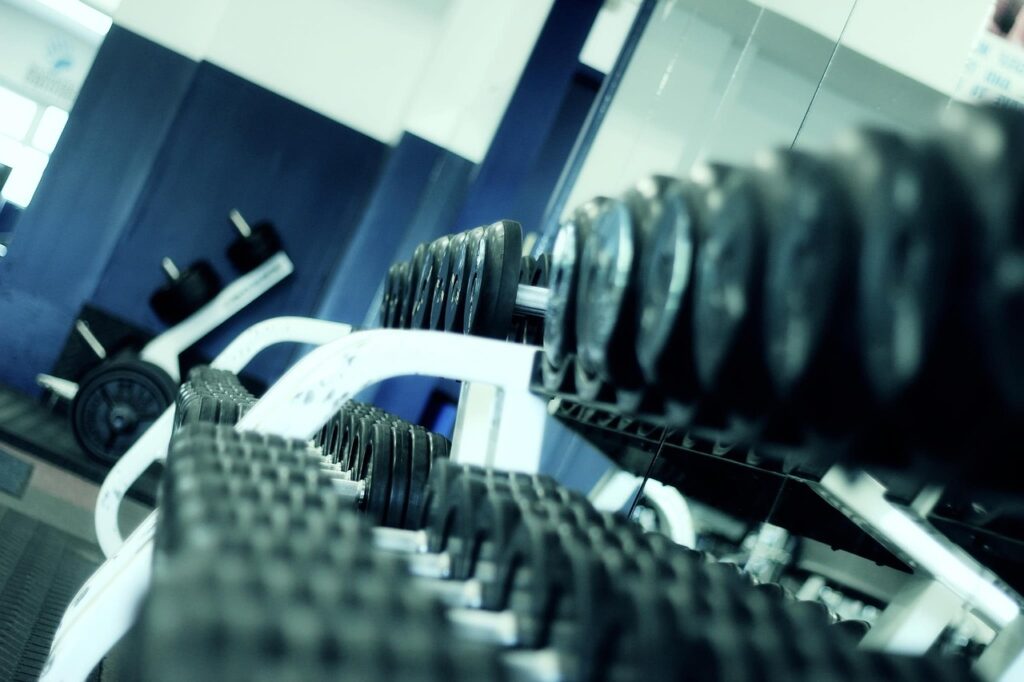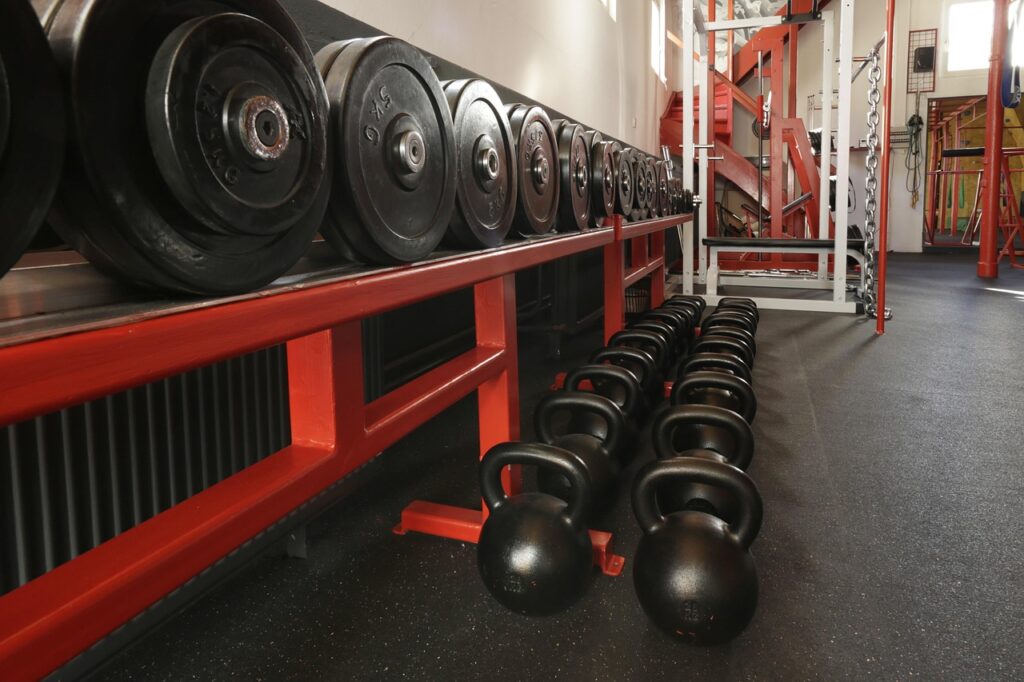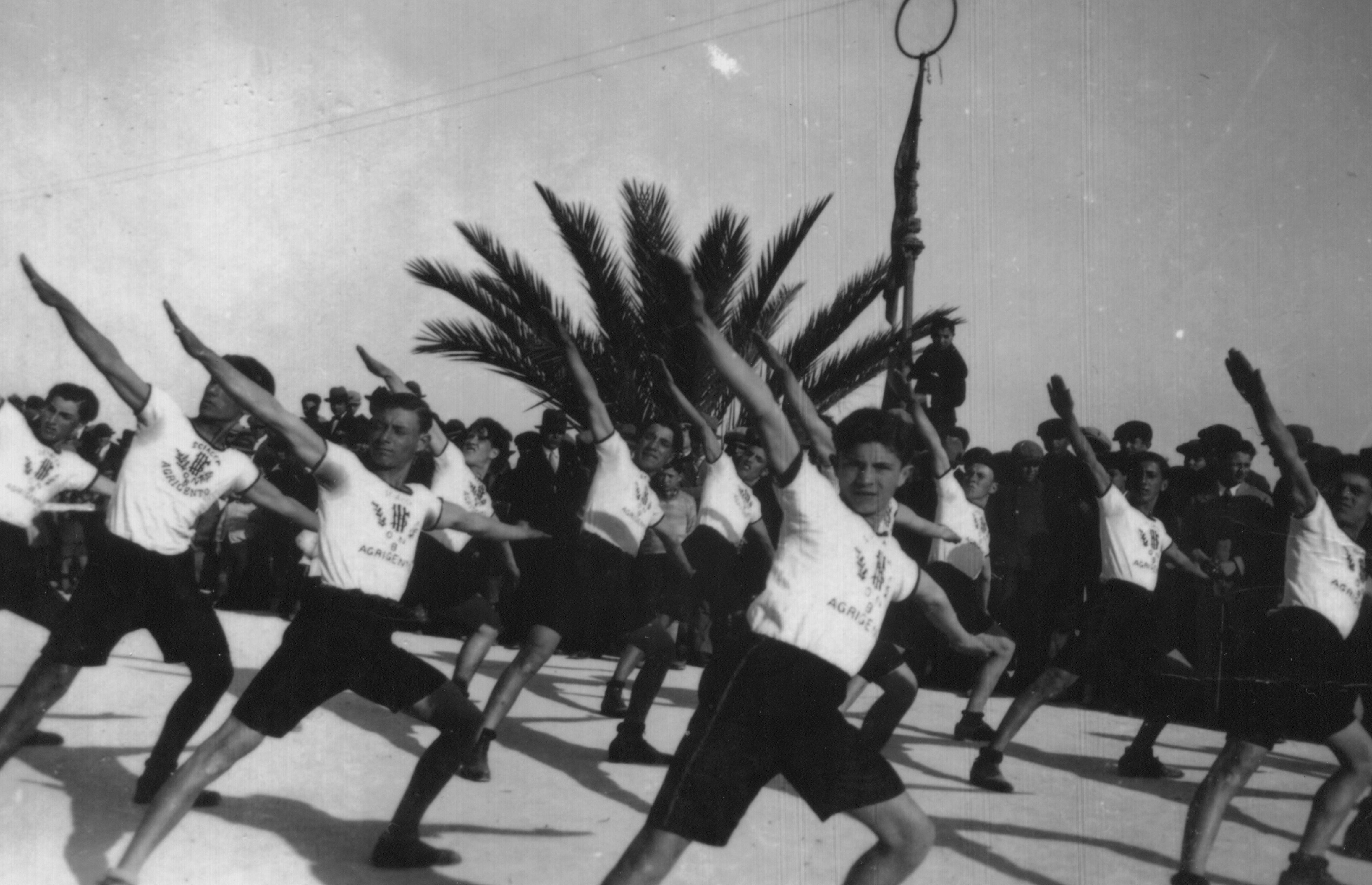
In the pursuit of strength and a fitter physique, many of us hit the gym with dedication, eager to push our limits. However, the path to a stronger body is often fraught with peril if proper technique is overlooked. Bad lifting form is a silent saboteur, leading not only to frustrating plateaus and stalled progress but, more critically, to debilitating injuries and persistent pain, especially in the back—a common complaint for a significant portion of the population.
This in-depth guide is designed to illuminate the most insidious form mistakes that specifically target your back, transforming your lifting routine from a risk into a rewarding journey. We’ll delve into eight clear indicators that your technique might need fine-tuning, directly addressing the core issues that compromise spinal health. By understanding these pitfalls and implementing expert-backed solutions, you can proactively safeguard your spine, enhance your performance, and achieve tangible, sustainable results in your fitness journey.
Our goal is not just to identify the problems, but to empower you with actionable, practical advice straight from strength coaches and medical professionals. With insights focused on achieving proper form, improving muscle engagement, and building a resilient body, you’ll learn how to lift smarter, grow stronger, and ensure your workouts are both effective and injury-free for the long haul. Remember, your body is your most valuable equipment; treating it with precision and care is paramount.
1. **Bad Posture During Lifts (Slouching or Arching the Back)**One of the most fundamental yet frequently overlooked errors in the gym is maintaining poor posture during lifts. Whether you’re slouching, excessively arching your back, or keeping it rigidly flat, any deviation from a neutral spine sets the stage for potential injury. This isn’t just about aesthetics; improper spinal alignment significantly compromises the integrity of your back, placing undue strain on delicate discs and surrounding tissues that are ill-equipped to handle heavy loads in compromised positions.
Beyond the immediate risk of strain and pain, poor posture during lifts limits the effectiveness of your workout. When your spine is out of alignment, the primary muscles you intend to work cannot engage optimally. Instead, smaller, stabilizing muscles become overworked as they try to compensate, leading to imbalances, fatigue, and ultimately, a less efficient and productive lifting session. This compensatory action can prevent true strength gains in your target muscle groups, hindering your progress over time.
As JAG Physical Therapy wisely notes, “Small changes in how you stand, sit, or squat can make a world of difference. While improper posture puts unnecessary strain on your muscles and joints, holds you back from your best performance, and may even lead to injury, assuming the right posture can take your lifting to greater heights.” This underscores the critical importance of a neutral spine, which acts as the foundation for safe and effective movement, distributing weight evenly and allowing your major muscle groups to fire correctly.
To correct this pervasive mistake, the focus must be on cultivating a neutral spine position. This involves a slight natural curve in your lower back, engaging your core muscles to create a supportive brace, and being mindful of your stance. Practicing core-strengthening exercises outside of your main lifts can significantly improve your ability to maintain this crucial posture under load. Additionally, regularly reassessing your stance and setup before each lift helps reinforce good habits, ensuring your back is protected from the very first rep.
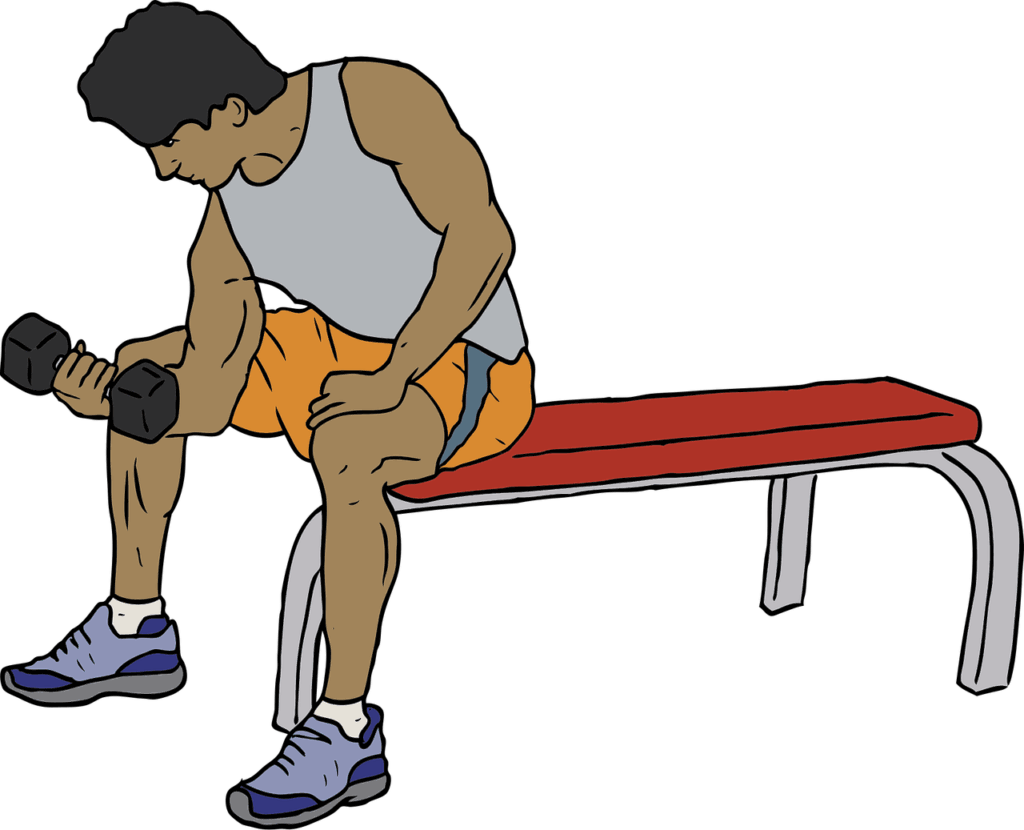
2. **Uneven Weight Distribution (Leading to Compensatory Back Strain)**Another subtle yet destructive form mistake is uneven weight distribution, where one side of your body bears more load than the other during an exercise. This imbalance can occur across a spectrum of movements, from stationary exercises like a bench press to dynamic actions such as a squat or lunge. Often, this isn’t immediately obvious and can manifest as a slight lean, a tilt, or a feeling that one limb is struggling more than its counterpart. The consequences, however, are far from subtle.
When one side of your body is consistently working harder, it creates a cascade of compensatory movements throughout your kinetic chain. Your body, being incredibly adaptable, will try to find the easiest path to complete the lift, often by recruiting muscles that aren’t meant to be primary movers for that exercise. This is particularly detrimental to your back, as spinal muscles may be forced into an unnatural role to stabilize an uneven load, increasing the risk of muscle strain, ligament sprains, and even disc issues over time.
This imbalance not only elevates your injury risk but also perpetuates muscular asymmetries. If one side is perpetually stronger or more active, the weaker side struggles to catch up, creating a feedback loop of uneven development. Over time, this can lead to chronic pain, reduced mobility, and a higher susceptibility to injury, even in daily activities outside the gym. It undermines the very goal of strength training, which is to build a balanced and functional body.
To effectively counteract uneven weight distribution, a targeted approach is necessary. Incorporating unilateral exercises into your routine is a highly effective strategy. Movements like single-arm presses, single-leg squats, or lunges force each side of your body to work independently, highlighting and addressing any existing imbalances. This focused training helps to strengthen weaker links, improve core stability, and retrain your body to distribute weight more evenly. Paying close attention to symmetry and alignment during every lift, even bilateral ones, is crucial for long-term progress and spinal health.
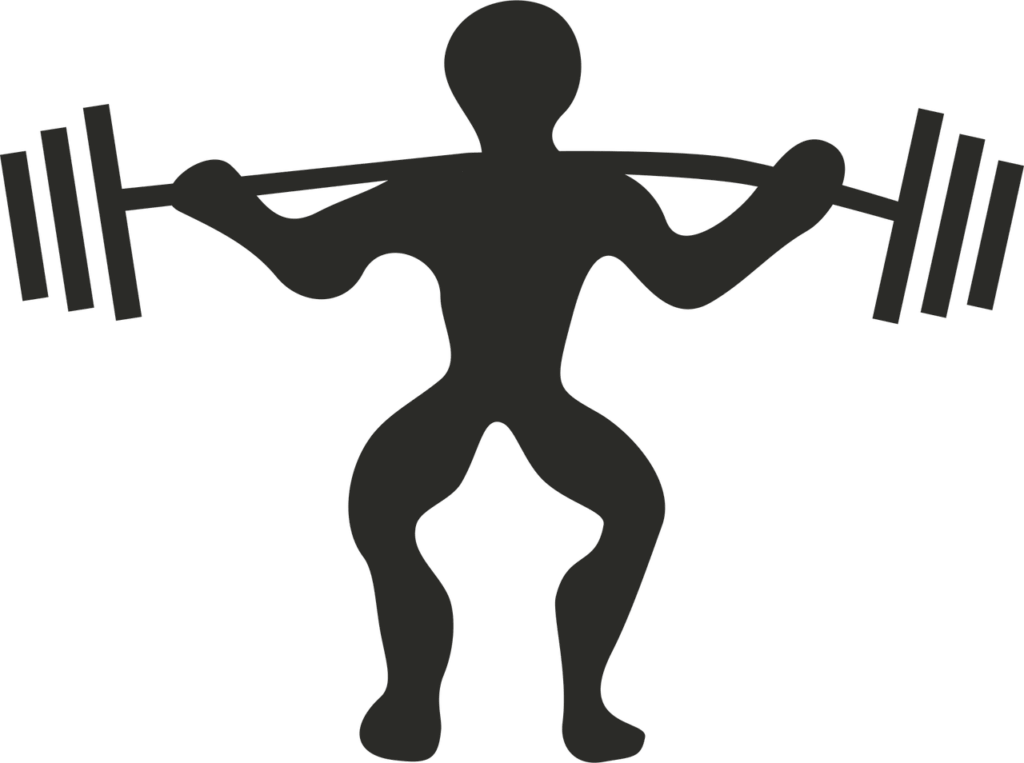
3. **Ignoring Pain Signals in the Wrong Body Parts (Especially Lower Back)**Perhaps one of the most dangerous and common mistakes in lifting is the tendency to push through pain, particularly when that pain arises in areas that shouldn’t be primarily engaged in a specific exercise. Feeling discomfort in your lower back during bicep curls, experiencing neck strain during squats, or noticing pain in your knees or shoulders during lifts are not just minor inconveniences; they are red flags signalling a fundamental breakdown in your lifting technique. Ignoring these crucial physiological warnings is an express ticket to serious injury.
This type of pain often indicates that compensatory muscles are overworking, attempting to make up for weaknesses in your primary movers or simply trying to stabilize a movement executed with poor form. For instance, if your core isn’t properly engaged during bicep curls, your lower back might arch and strain to provide stability, leading to unnecessary and harmful stress on your lumbar spine. Similarly, neck strain during squats can point to an unstable upper back or an excessively forward head position, both of which compromise spinal alignment.
As Dr. David Braunreiter, a Sports Medicine Specialist at Houston Methodist, emphasizes, “A big part of avoiding weightlifting injuries is about letting go of the ego… it’s also important to know what proper form looks like and that the goal should always be to perform to a level of fatigue – never pain.” This expert advice highlights a critical truth: pain is your body’s way of communicating that something is wrong. Pushing through it, especially in areas not targeted by the exercise, is a direct contradiction to safe and effective training principles.
If you experience pain in the wrong body parts, the immediate and most crucial step is to stop the exercise. Reassessing your form, reducing the weight, and focusing on a meticulous, controlled movement pattern are essential. If the pain persists, seeking guidance from a professional—whether a personal trainer or a physical therapist—is highly recommended. They can offer a trained eye to spot mistakes you might miss, helping you identify the root cause of the discomfort and implement targeted corrections before a minor ache escalates into a debilitating injury.
4. **Initiating Deadlifts Primarily with Back Muscles (Instead of Glutes)**The deadlift is often hailed as the king of all exercises, a powerful movement that builds full-body strength. However, it’s also one of the most commonly butchered lifts, primarily due to the mistake of initiating the movement with the back muscles rather than the powerful glutes. Many lifters, perhaps misinformed or simply unaware of proper biomechanics, treat the deadlift as a “back exercise,” when in reality, it should be a glute-dominant movement designed to leverage the body’s largest and strongest muscle group.
The context provides a vivid analogy to illustrate this critical error: “Our back muscles/ extensors (what you would use during a Dead Lift) are similar in cross-sectional area to string cheese at best, whereas, our glutes are plump, juicy steaks. Let’s use the juicy steaks!” This highlights the anatomical reality that your spinal erectors are relatively small and delicate compared to your robust glutes. Attempting to lift heavy weight primarily with your “string cheese” back muscles places immense and unsustainable strain on the lumbar spine, making it the number one cause of deadlift-related injuries.
When the back takes over, the lumbar spine often rounds, moving away from its crucial neutral position. This rounded posture places compressive and shearing forces on the spinal discs, significantly increasing the risk of disc irritation, bulges, or even herniations. It bypasses the natural strength and protective capabilities of your glutes and hamstrings, which are designed to absorb and distribute the load safely during hip hinge movements. The exercise, instead of building a strong and resilient posterior chain, becomes a direct threat to spinal health.
To execute a safe and effective deadlift, a complete paradigm shift in thinking is required: it’s a hip hinge, not a back lift. The initiation of the movement should come from squeezing your butt cheeks and literally thinking of “thrusting your hips forward” as you stand up with the weight. This engages your glutes and hamstrings, allowing them to perform the heavy lifting and protect your spine. Focus on maintaining a neutral spine throughout the entire range of motion, letting your hips drive the movement, and ensuring your powerful “juicy steaks” are doing the work they were designed for.
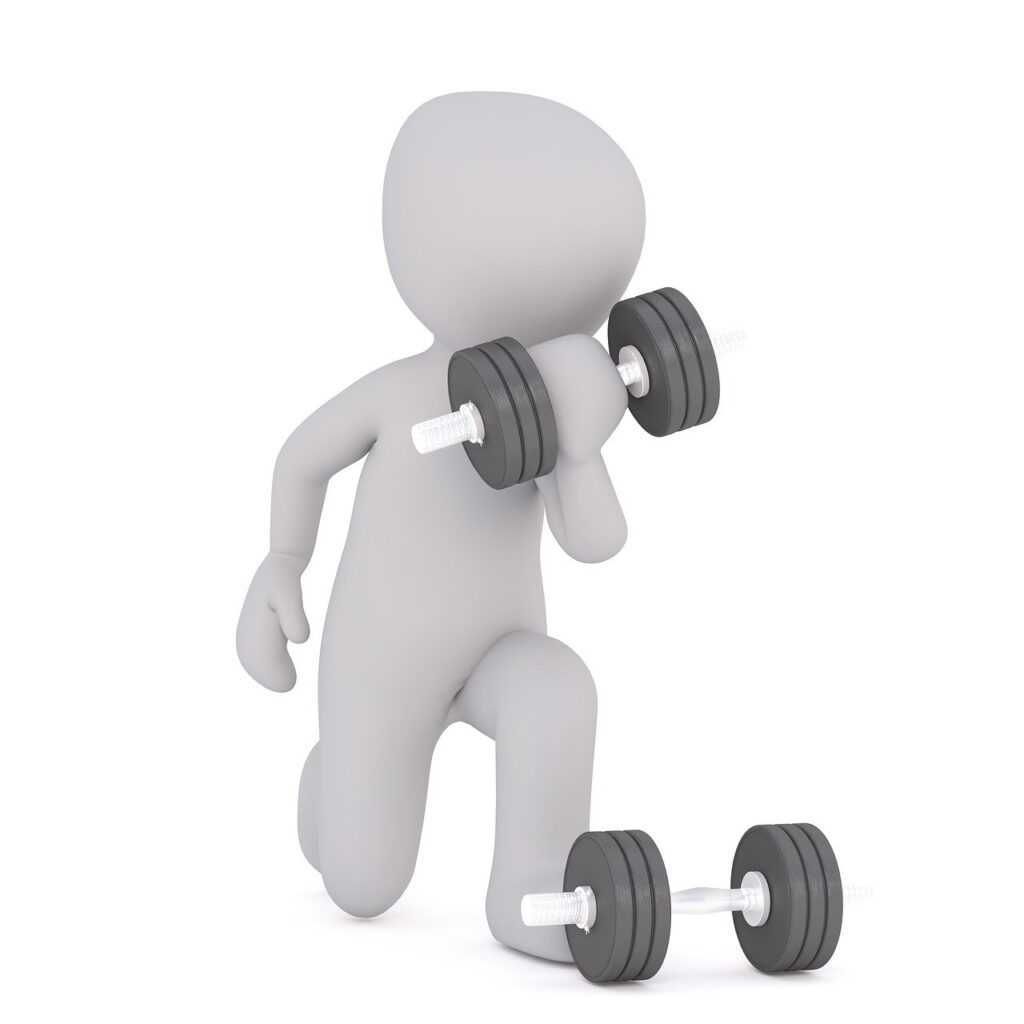
5. **Holding Your Breath During Exertion (Valsalva Maneuver During Heavy Lifts)**In the heat of a challenging lift, it’s a natural, almost instinctual reaction for many to hold their breath, bracing their core in what is known as the Valsalva maneuver. While there’s a nuanced discussion around the Valsalva maneuver’s role in creating intra-abdominal pressure for spinal stability, performing it incorrectly—or forgetting to breathe out during the exertion phase—is a critical and dangerous form mistake that significantly jeopardizes back health. The context starkly reminds us, “We can survive potentially days without food and water. We can survive mere minutes without breathing.” This emphasizes the fundamental importance of respiration, even during intense physical effort.
When you hold your breath and strain during a heavy lift, the pressure within your abdominal cavity skyrockets dramatically. This exponential rise in intra-abdominal pressure, especially without proper release during the exertion, has severe implications for your spinal discs. It can lead to sudden, intense compression on the discs, causing irritation, and if the load exceeds the body’s tolerance, it can be a direct contributor to disc herniation. This is particularly true during lifts like deadlifts, squats, or overhead presses, where maximal exertion is often paired with significant spinal loading.
Beyond the immediate risk of disc injury, holding your breath also impacts cardiovascular health. The sudden increase in blood pressure can be dangerous, especially for individuals with underlying heart conditions. It can lead to lightheadedness, dizziness, and even fainting, making it a hazardous practice that compromises overall safety in the gym. Effective breathing patterns are not merely about supplying oxygen to working muscles; they are fundamental to managing internal pressure and protecting the most vulnerable structures of your body.
To correct this potentially life-altering mistake, it is imperative to consciously focus on your breathing during every rep. The instruction is clear: “When you perform a Dead Lift, YOU MUST blow out while you are exerting. This means, when you are doing the actual lift, you should blow out.” This applies broadly to most strenuous lifting exercises. Exhaling during the concentric (lifting) phase helps to regulate intra-abdominal pressure, protect your spine, and ensure consistent oxygen flow. Practicing diaphragmatic breathing and consciously coordinating your breath with your movements will purify the exercise, making it safer and more effective, ensuring that you lift smart, not just heavy.
Continuing our deep dive into the most common errors that can compromise your back health and overall performance, we now turn our attention to five more critical form mistakes. These pitfalls often go unnoticed until pain or injury strikes, but with expert guidance, you can proactively correct them, ensuring your workouts contribute to lasting strength and resilience. From unsuitable exercise choices to fundamental missteps in spinal alignment, understanding these issues is your next step to lifting smarter and growing stronger.
6. **Sit Ups (A Frequent Culprit for Back Pain)**Many of us embark on abdominal training with the admirable goal of sculpting a strong core or achieving that coveted six-pack. Sit ups are a traditional choice for this, primarily targeting the Rectus Abdominis. While they certainly can contribute to the aesthetic appeal of a six-pack, their utility for truly comprehensive core strength and spinal health is often misunderstood.
However, the perceived benefits of sit ups are frequently overshadowed by their potential drawbacks, especially concerning back health. The core is composed of two primary groups of abdominal muscles: the superficial set (primarily the Rectus Abdominis) and the deep set (the Transversus Abdominis). Sit ups largely engage the superficial muscles, which only cover the front of your belly, leaving the rest of your core unsupported. In contrast, the Transversus Abdominis wraps around like your body’s natural corset, providing crucial all-around support, making its training and progression a superior solution for actual core strengthening and spinal stability.
Beyond inefficient core targeting, sit ups pose specific risks for certain individuals. For those grappling with significant osteoporosis, the repetitive flexion motion inherent in sit ups can dramatically increase the risk of spinal fractures. Furthermore, if you suffer from significant or chronic low back pain, sit ups are unlikely to provide relief and may, at best, be ineffective or, at worst, exacerbate your condition.
The potential for harm extends to other conditions as well. Individuals with diastasis recti, a common abdominal splitting post-pregnancy, will find that sit ups can worsen this condition, necessitating a deep core stabilizing program instead. Similarly, a history of abdominal or inguinal hernia means sit ups will typically increase intra-abdominal pressure, elevating stress on the hernia site. And, crucially, if you have a history of lumbar disc herniation, sit ups will intensify intra-abdominal and lumbar disc pressure, a direct pathway to further irritation or injury.
The verdict on sit ups is nuanced: if your sole aim is a six-pack and you have no underlying contraindications, they can be part of your routine. However, for true core stabilization and spine protection, exercises where your spine remains neutral, such as planks or crunches (which are more isometric), are often preferred. If you experience chronic back pain or have any of the aforementioned conditions, it is imperative to avoid sit ups and consult a physical therapist for a tailored core stabilization program.
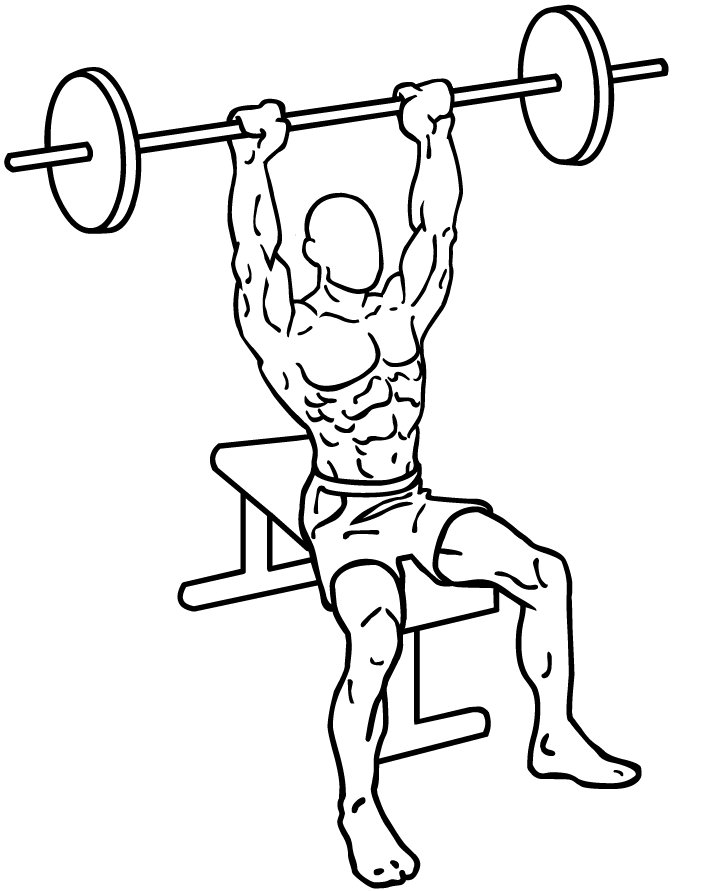
7. **Overhead Press (The Shoulder Stressor)**The Overhead Press, also known as the Shoulder Press or Military Press, is an exercise many lifters include to strengthen shoulders and achieve a broader, more muscular upper body. While it does indeed engage various muscles around your shoulder—including the anterior and middle deltoids, parts of your pectorals, triceps, and hopefully your serratus anterior for scapular stabilization—its place in a general fitness routine is highly debated among experts.
From a physical therapist’s perspective, the Overhead Press is frequently identified as a “worst gym offender” due as it places the shoulder joint in a highly vulnerable position. When significant weight is added to this already compromised position, especially during repetitive actions, it creates considerable tension on the biceps where it attaches to the labrum. This can lead to what is known as the “Peel Back Mechanism,” where the biceps can literally pull the top of the labrum, in whole or in part, off the shoulder socket. Stories of individuals tearing both labrums simultaneously with modest weight underscore the severe injury risk.
For those whose professions or recreational activities genuinely require overhead lifting, such as a UPS driver needing to lift heavy boxes, the Overhead Press might be a necessary, albeit carefully managed, component of their training. In such cases, it is crucial to keep the weight modest, practicing with loads close to or even slightly below what is actually required for your job. There’s no need to perform 3 sets of 15 repetitions with 50 lbs if your work doesn’t demand 45 repetitions of that weight within minutes.
However, for the vast majority of lifters seeking general shoulder strength or aesthetics, the recommendation is often to discontinue Overhead Presses entirely. If you have no strong emotional attachment to the exercise and aren’t sure why you’re doing them, elimination is often the safest path. If you insist on continuing, consider performing it in a recline bench position, leaning back 20-30 degrees while still pushing the weight toward the ceiling. This modification reduces the vulnerable shoulder position, although discontinuing the exercise remains the preferred advice to safeguard your shoulder health.

8. **Squats & Leg Press (Avoiding Common Missteps for Joint Health)**Squats and Leg Presses are lauded as foundational exercises, strengthening your quadriceps and gluteals, and contributing significantly to functional activities vital for daily life. From getting in and out of a chair or car, navigating stairs, walking inclines, to jogging and running, these movements are indispensable. However, to harness their full potential without risking injury, meticulous attention to form is paramount.
One of the most critical form rules for squats is to never squat past 90 degrees of knee bend. Beyond this point, the stress on the menisci within the knee joint escalates significantly. As the knee approaches its full bending range, it naturally twists, further increasing meniscal stress. Pushing beyond 90 degrees, especially with heavy loads, invites unnecessary strain and potential injury to these crucial knee structures.
Furthermore, attempting deep squats with existing hip or ankle tightness forces your body to compensate, setting various parts up for injury. Hip tightness can lead to anterior hip pinching, known as hip impingement. Ankle tightness, in particular, can cause compensations higher up the kinetic chain, resulting in patellofemoral pain or even shoulder instability if combined with movements like an overhead squat. Your body will find the path of least resistance, often at the expense of proper joint alignment and safety.
To safeguard your knees, always strive to keep your kneecaps behind your toes during squats and leg presses. With the exception of walking downstairs or downhill, nearly all functional activities can be performed while maintaining this alignment. Adhering to this principle significantly decreases anterior knee pressure and pain, preserving your “anterior knee stress budget” for those necessary downhill movements.
Finally, ensuring your kneecap remains in line with your second toe is vital. The knee is a hinge joint, designed primarily for forward and backward movement. Allowing your knees to collapse inward (valgus collapse) or bow outward excessively places undue stress on your ligaments and menisci. Consistent attention to this alignment during every squat and leg press will protect these structures, ensuring your powerful lower body exercises are both effective and safe for long-term joint health.
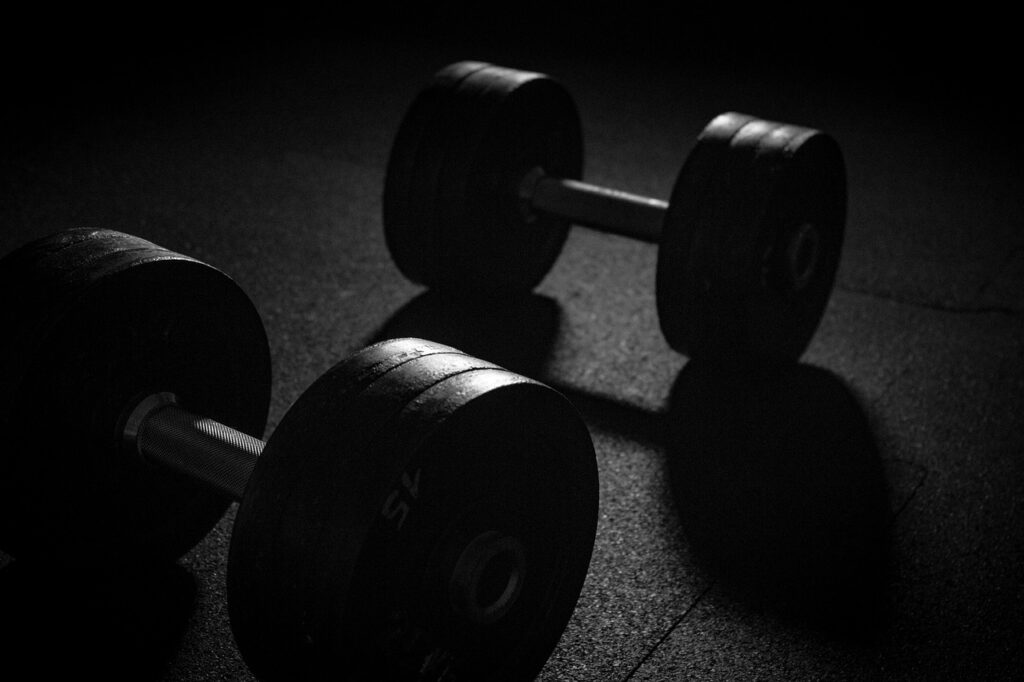
9. **Neck Position (The Unsung Hero of Spinal Alignment)**Often overlooked in the broader context of lifting form, the position of your neck plays a profoundly crucial role in maintaining overall spinal alignment and preventing pain. Regardless of the exercise, your unwavering goal should be to start and end with a neutral neck posture. This means your neck should appear as a seamless continuation of your spine, avoiding any awkward angles or excessive strain.
It’s instinctual for us to keep our head vertically oriented relative to gravity, and our head prefers this familiar position. However, during various exercises, this natural tendency can become a source of significant stress for the neck, particularly if the body is not aligned. Examples of poor neck position, such as a “Non-Neutral Neck Position with a Bird Dog,” highlight how subtle deviations can lead to discomfort and potential injury.
One common error is to subconsciously “finish” an exercise by adding a chin jut, which can defiantly stress and cause pain in the neck. This seemingly minor habit can have significant implications, especially for individuals with a history of neck pain. Paying meticulous attention to your neck’s alignment, actively ensuring it remains neutral and avoiding any jutting or hyperextension, is a simple yet powerful way to protect your upper spine and enhance the integrity of every lift.
10. **Hip Abduction and Adduction Machines (More Harm Than Help for Your Back)**Those awkward, butterfly-like machines found in many gyms, designed to either squeeze your legs together or push them apart against resistance, are commonly referred to as Hip Abduction and Adduction machines. While they claim to target your hip abductors (gluteals, outer buttock, and thighs) and adductors (inner thighs), their actual effectiveness and safety, especially for back health, are highly questionable.
From an efficiency standpoint, these machines often fall short. They don’t do a great job at effectively strengthening the targeted muscles compared to other, more functional exercises. For instance, hip abductors are far better strengthened through movements like clamshells. Moreover, adductors, for most people, tend to be tight rather than weak, meaning strengthening them isn’t always a priority, and flexibility work might be more beneficial.
Crucially, the design and setup of these machines actively encourage exercisers to move excessively through the low back. This compensatory movement pattern can place undue stress on the lumbar spine, making them a problematic choice for anyone, and an absolute no-go if you already experience low back pain. Instead of isolating and strengthening the intended muscles safely, these machines often promote poor movement habits that jeopardize spinal health, turning them into an unsuitable exercise choice for those prioritizing a healthy back.
Spotting these warning signs is your crucial first step toward transforming your strength training journey. The undeniable key? Consistently working on refining and improving your form. As physical therapists and strength coaches universally suggest, prioritizing proper form is not merely a recommendation; it’s the absolute cornerstone of effective strength training. Why? Because good form doesn’t just dramatically cut down the risk of injury; it profoundly boosts your overall performance, allowing you to unlock true strength and resilience.
When you commit to using the correct form, you’re not simply moving weights; you’re precisely hitting the right muscles, drastically improving exercise efficiency, and forging that all-important mind-muscle connection. Make it a non-negotiable habit to review your form regularly—treat it with the same dedication as your workout schedule. Utilize readily available tools like mirrors for immediate visual feedback, record yourself from various angles for an objective analysis, and critically, don’t hesitate to lower the weight when you’re learning new movements or refining existing ones. Building a rock-solid foundation through impeccable form is precisely what sets you up for consistent, long-term progress and injury-free strength gains.
Furthermore, this unwavering focus on form opens the door to leveraging advanced technological tools that can revolutionize your technique. Platforms like CueForm AI, for instance, provide real-time, personalized feedback on critical exercises such as squats, bench presses, and deadlifts. This cutting-edge technology helps you make precise adjustments on the fly, offering consistent, objective analysis that mirrors the guidance of a human coach, without the logistical hassle of scheduling. Integrating such tools seamlessly into your routine makes it easier than ever to fine-tune your technique, ensuring that every rep counts towards a smarter, stronger, and more resilient you. By embracing these insights and utilizing the right resources, you’re not just lifting weights; you’re strategically building a body that performs at its peak, safely and effectively, for years to come.

